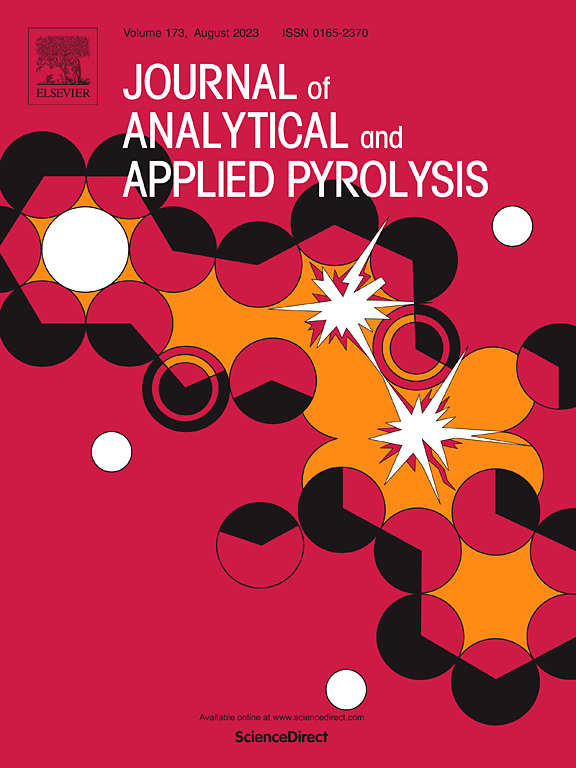Formation of chloride products in the MSW (municipal solid wastes) pyrolysis process by Py-GC/MS method with key model components
IF 5.8
2区 化学
Q1 CHEMISTRY, ANALYTICAL
引用次数: 0
Abstract
The formation of chloride products in the process for pyrolysis of municipal solid wastes (MSW) with key model components was investigated by Py-GC/MS method. HCl and CH3Cl are identified as the most abundant chloride products for the individual pyrolysis of polyvinyl chloride (PVC) or corn straw (CS) in the range of 200–600 °C. For the pyrolysis of CS, a higher temperature is more favorable for the generation of HCl than that of CH3Cl. In the PVC pyrolytic products, chlorobenzene (Ph-Cl), benzyl chloride (Ph-CH2Cl), and 1-(chloroethyl)benzene (Ph-CHClCH3) are also detected but in extremely low amounts. For the co-pyrolysis of PVC/CS, the formation of CH3Cl is significantly promoted. The synergistic effect in the PVC/CS co-pyrolysis process is mainly attributed to the reaction between the HCl derived from PVC and the decomposition products of lignin. The products of Ph-Cl and Ph-CH2Cl are mainly generated from the cyclization of Cl-containing chain species. CH3Cl and Ph-CHClCH3 are mainly generated from secondary reactions between HCl and other pyrolytic products. No remarkable synergistic effect is observed on the formations of chlorides in the co-pyrolysis of PVC/PP (polypropylene), while the generation of Ph-CHClCH3 is significantly enhanced in the co-pyrolysis of PVC/PS (polystyrene).
基于关键模型组分的Py-GC/MS法研究城市生活垃圾热解过程中氯化物产物的形成
采用Py-GC/MS法研究了含关键模型组分的城市生活垃圾热解过程中氯化物产物的形成。在200-600 °C范围内,聚氯乙烯(PVC)或玉米秸秆(CS)的单独热解产物中,HCl和CH3Cl含量最多。对于CS的热解,较高的温度比CH3Cl的生成更有利于HCl的生成。在PVC热解产物中,也检测到氯苯(Ph-Cl)、氯化苄(Ph-CH2Cl)和1-(氯乙基)苯(Ph-CHClCH3),但含量极低。对于PVC/CS共热解,明显促进了CH3Cl的生成。PVC/CS共热解过程中的协同效应主要是由于PVC衍生的HCl与木质素分解产物之间的反应。Ph-Cl和Ph-CH2Cl的产物主要是由含cl链种的环化产生的。CH3Cl和Ph-CHClCH3主要由HCl与其他热解产物的二次反应生成。在PVC/PP(聚丙烯)共热解过程中,氯化物的生成没有明显的协同效应,而在PVC/PS(聚苯乙烯)共热解过程中,Ph-CHClCH3的生成明显增强。
本文章由计算机程序翻译,如有差异,请以英文原文为准。
求助全文
约1分钟内获得全文
求助全文
来源期刊
CiteScore
9.10
自引率
11.70%
发文量
340
审稿时长
44 days
期刊介绍:
The Journal of Analytical and Applied Pyrolysis (JAAP) is devoted to the publication of papers dealing with innovative applications of pyrolysis processes, the characterization of products related to pyrolysis reactions, and investigations of reaction mechanism. To be considered by JAAP, a manuscript should present significant progress in these topics. The novelty must be satisfactorily argued in the cover letter. A manuscript with a cover letter to the editor not addressing the novelty is likely to be rejected without review.

 求助内容:
求助内容: 应助结果提醒方式:
应助结果提醒方式:


